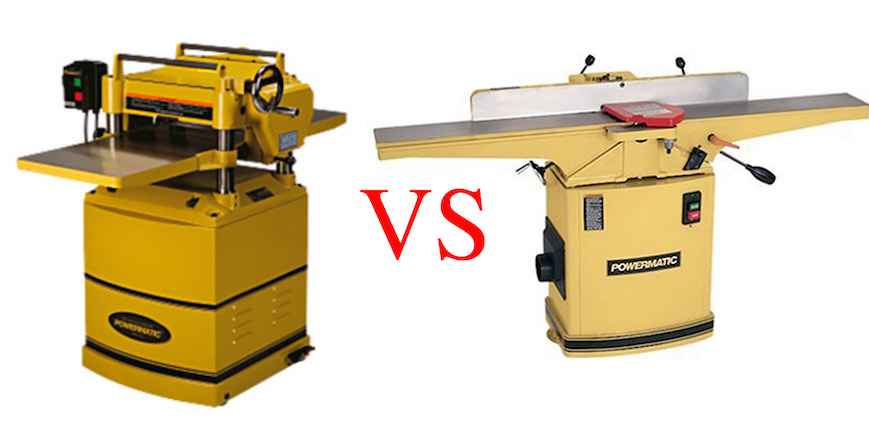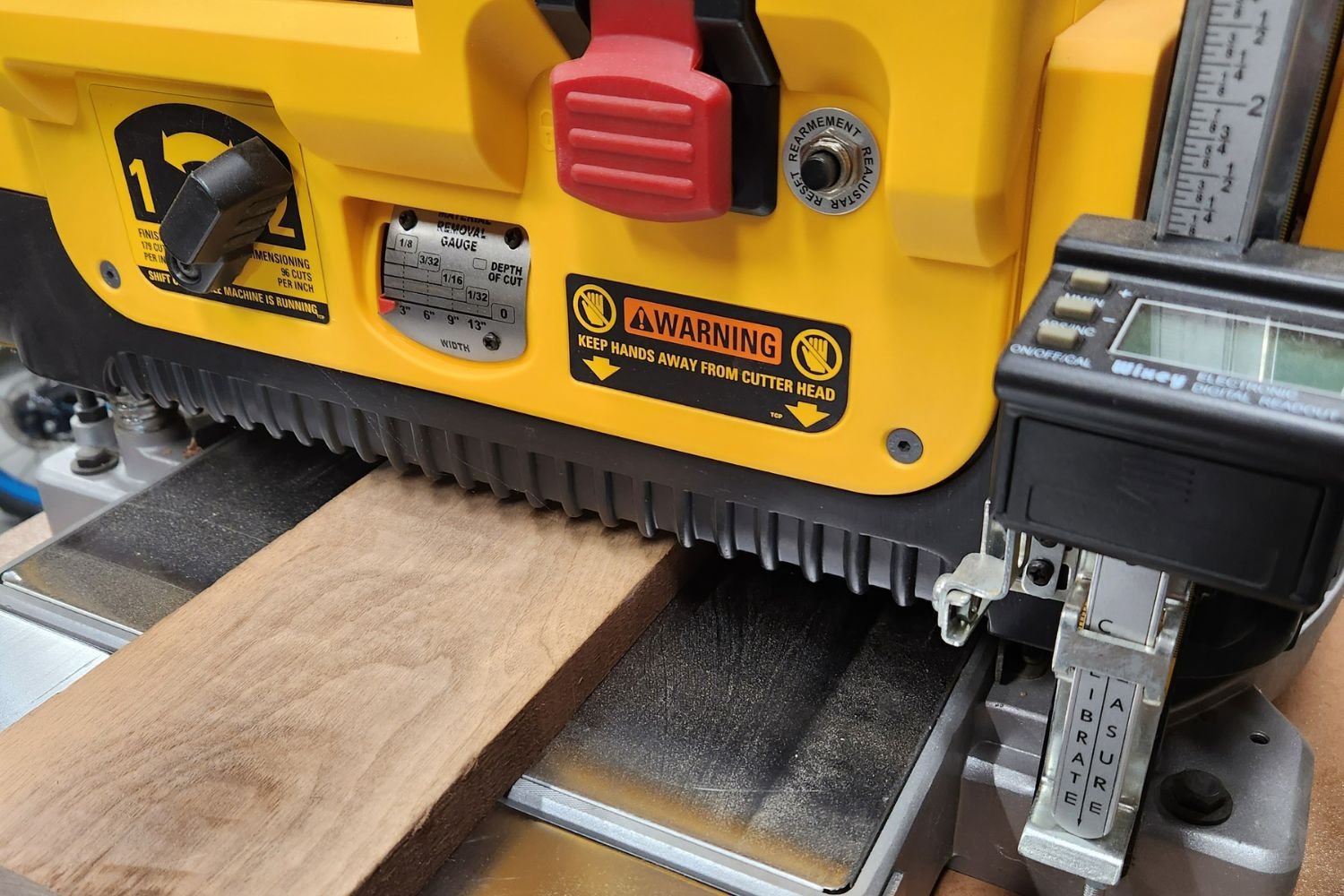Do you find yourself pondering whether you need a planer for your woodworking projects? Well, let’s dive right in to find out! Woodworking can be an exciting and fulfilling hobby, but with so many tools available, it’s essential to know which ones are necessary.
Now, you might be wondering, “What exactly does a planer do?” Great question! A planer is a versatile tool that helps smooth and flatten rough lumber, making it easier to work with. It can also be used to resize boards or create consistent thickness throughout your project.
So, the big question remains: do you really need a planer for your woodworking adventures? Stick around as we explore the benefits and potential alternatives to help you make an informed decision. Get ready to unleash your creative woodworking skills with or without a planer!

Do I Need a Planer for Woodworking?
Woodworking is a versatile and rewarding hobby that allows you to create beautiful and functional pieces from scratch. Whether you’re a beginner or an experienced woodworker, having the right tools is essential to achieve professional-quality results. One such tool that often comes up in discussions among woodworkers is the planer. But do you really need a planer for your woodworking projects? In this article, we will explore the benefits of using a planer, its versatility, and when it’s absolutely necessary to have one in your workshop.
What is a Planer and How Does It Work?
A planer is a woodworking tool used to achieve smooth and consistent thickness on wooden boards. It consists of a rotating cutterhead with multiple sharp blades that shaves off thin layers of wood as the board is fed through the machine. The blades are adjustable, allowing you to control the thickness of the cut. In addition to thicknessing, planers can also be used to remove imperfections, such as twists and warps, from the surface of the wood.
Using a planer is relatively straightforward. Once the machine is set up and the blades are properly adjusted, you simply feed the board through the planer, applying consistent pressure to ensure an even cut. The machine’s feed rollers pull the board through as the cutterhead spins, creating a smooth and even surface. However, it is important to note that planers can be dangerous if not used correctly, so it’s crucial to follow safety guidelines and wear appropriate protective gear.
Benefits of Using a Planer
Now that we understand what a planer is and how it works, let’s explore the benefits of adding this tool to your woodworking arsenal:
- Thickness Control: One of the primary advantages of using a planer is that it allows you to control the thickness of your boards with precision. This is particularly useful when working on projects that require uniformity, such as furniture or cabinetry. Whether you need to reduce the thickness of a board or make it thicker, a planer can help you achieve the desired results.
- Surface Smoothness: In addition to thicknessing, planers are excellent tools for achieving a smooth and even surface on your wooden boards. They can remove imperfections, such as knots or cupping, and leave you with a clean and professional finish. This is especially important if you plan to stain or paint your project, as any irregularities in the wood surface will be more noticeable.
- Time and Efficiency: Hand planing can be a time-consuming and physically demanding task, especially when working with large or thick boards. A planer, on the other hand, can save you a significant amount of time and effort by quickly and consistently achieving your desired thickness. This allows you to focus on other aspects of your woodworking project and complete it more efficiently.
When is a Planer Necessary?
While planers offer numerous benefits and can greatly enhance your woodworking experience, they may not be absolutely necessary for every project or woodworker. Here are a few instances where having a planer becomes essential:
- If you frequently work with rough lumber or reclaimed wood, a planer will help you achieve a level and uniform thickness throughout your project.
- For projects that require specific thickness dimensions, such as table legs or drawer fronts, a planer is crucial to ensure consistency and precision.
- If you’re looking to maximize the quality and appearance of your finished pieces, a planer will help you achieve a smooth and professional surface that can be hard to achieve with hand tools alone.
Ultimately, the decision to invest in a planer comes down to your specific woodworking needs and goals. Consider the types of projects you undertake, the materials you work with, and the level of precision and efficiency you strive for. If you find yourself frequently needing precise thicknesses or struggling with rough lumber, a planer can be a valuable addition to your workshop.
However, if you’re just starting out and working on smaller projects or simply enjoy the process of hand planing, you may not need a planer right away. It’s always possible to achieve smooth surfaces and accurate thicknesses using traditional hand tools.
Factors to Consider When Choosing a Planer
Now that we’ve established the importance of a planer in certain woodworking scenarios, it’s vital to choose the right one for your needs. Here are some factors to consider when selecting a planer:
1. Budget
Planers come in a variety of price ranges, from affordable benchtop models to high-end industrial-grade machines. Consider your budget and invest in the best planer you can afford without compromising on quality and essential features.
Key Takeaways: Do I Need a Planer for Woodworking?
- A planer is a helpful tool for woodworking that can save you time and effort.
- It is not absolutely necessary to have a planer, but it can greatly enhance your woodworking projects.
- A planer is used to smooth and thickness rough lumber, making it easier to work with and achieve precise measurements.
- If you plan on working with reclaimed or rough-sawn wood, a planer can be especially beneficial.
- Consider your woodworking needs and budget before deciding whether to invest in a planer.
Frequently Asked Questions
Welcome to our frequently asked questions section on woodworking! Here, we’ll address some common concerns related to planers and woodworking projects. Whether you’re a beginner or an experienced woodworker, you’ll find useful information here.
1. What is the purpose of a planer in woodworking?
A planer is a valuable tool in woodworking that helps to level and smoothen wooden boards. It is used to create a consistent thickness throughout the entire piece of wood, making it easier to work with. Planers are particularly useful when working with rough-cut lumber or when you need to remove imperfections, such as knots or warping, from your wood.
By using a planer, you can ensure that all your wooden pieces have uniform dimensions, resulting in a more professional and polished finished product. Whether you’re building furniture, cabinets, or any other wooden project, a planer can greatly improve the quality of your work.
2. Do I really need a planer for my woodworking projects?
While it is not absolutely necessary to have a planer for every woodworking project, it can greatly enhance the quality and efficiency of your work. If you often work with rough or uneven wood, a planer can help you achieve a smooth and even surface.
A planer also allows you to resize wooden boards to the desired thickness without relying solely on pre-cut materials. This gives you more flexibility and control over your projects. Additionally, a planer can save you time and effort by eliminating the need to sand down uneven surfaces manually. It’s definitely worth considering if you’re serious about woodworking and want to improve the overall finish of your projects.
3. Can a planer be used for different types of wood?
Yes, a planer can be used on various types of wood, including softwood and hardwood. However, it’s important to consider the specific characteristics of the wood you’re working with. Different woods may require adjustments to the planer settings, such as feed speed and depth of cut, to achieve the desired results.
Hardwood, such as oak or maple, tends to be denser and may require slower feed speeds and shallower cuts to avoid tear-out or damage to the wood fibers. Softwoods like pine or cedar are generally more forgiving and can be planed using a faster feed speed and deeper cuts, but caution is still advised to achieve the best results.
4. Are there different types of planers available?
Yes, there are different types of planers available to suit various woodworking needs. The most common types are hand planers and power planers. Hand planers are manual tools that require physical effort and skill to operate. They are typically used for smaller, more precise woodworking tasks.
Power planers, also known as thickness planers, are electric tools that use rotating blades to remove material from the wood surface. They are more efficient and suitable for larger woodworking projects. Power planers come in different sizes and power options, allowing you to choose one that fits your specific needs.
5. Can a planer be used by beginners?
Absolutely! While planers can be a more advanced tool in the woodworking arsenal, they can still be used by beginners with some practice and guidance. It’s important to familiarize yourself with the tool’s operation and safety guidelines before use.
Start with smaller, simpler projects to gain confidence in using a planer. Work on understanding how to adjust the settings, feed the wood properly, and produce smooth surfaces. With patience and practice, a planer can become a valuable tool in your woodworking journey.

Tools you DON’T need: Jointer vs Planer vs Drum sander
Summary
Woodworking can be a fun hobby, but do you really need a planer? Well, it depends. A planer is a handy tool that smoothens and evens out wood, making it easier to work with. If you’re planning on doing a lot of woodworking projects or working with rough lumber, a planer can save you time and effort. However, if you’re just starting out or working on smaller projects, you might be able to get by without one. It’s important to consider your budget and the types of projects you’ll be tackling before deciding if a planer is necessary for you.
Regardless of whether or not you decide to invest in a planer, remember that safety should always come first. Woodworking can be dangerous, especially if you’re not using the right tools or techniques. Make sure to research proper safety practices, wear protective gear, and work in a well-ventilated area. With careful planning and a focus on safety, you can enjoy the rewarding experience of woodworking, whether or not you choose to use a planer.
